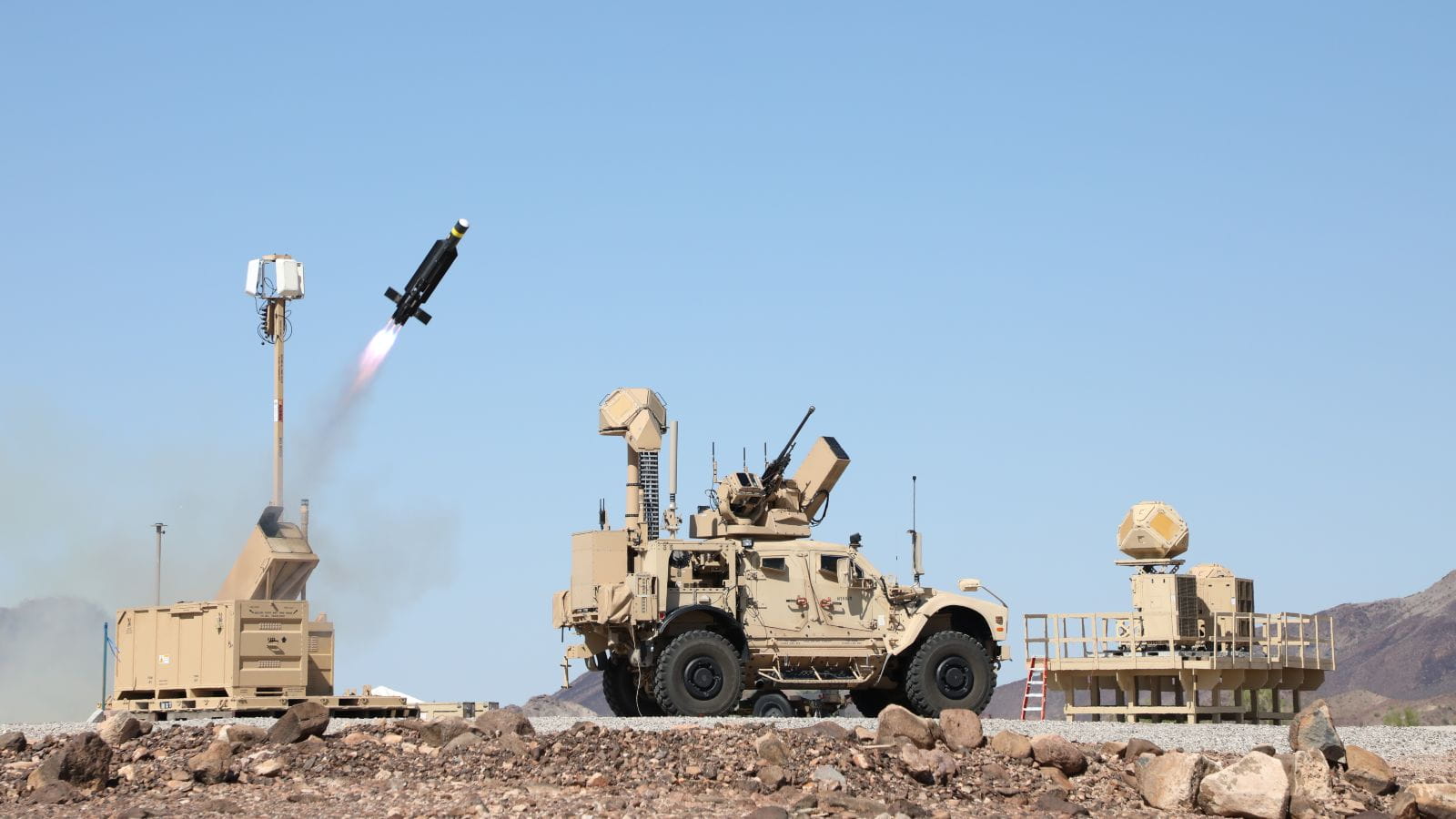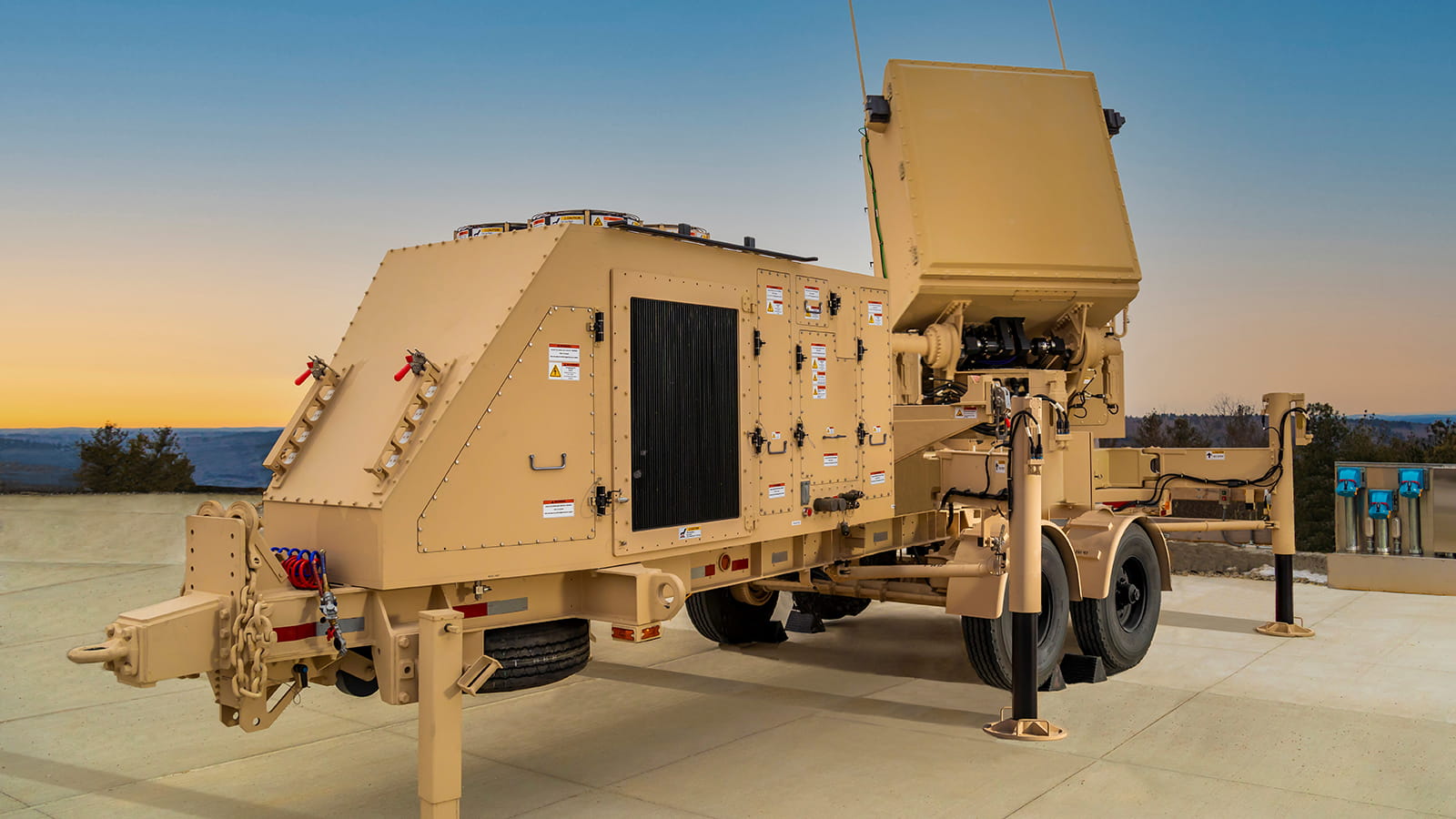AMRAAM Missile: A long legacy with new capability
The AMRAAM missile is the air-to-air weapon of choice for U.S. and allied militaries. And it keeps getting better.
Its roots go back three decades, but today’s AMRAAM missile is vastly different from its predecessors, thanks to multiple updates of its hardware and software.
“The AMRAAM missile is arguably the most sophisticated air-to-air weapon in use today and for good reason. It has to be in order to address the complex threats we’re seeing from our adversaries,” said Paul Ferraro, president of Air Power for Raytheon, a Raytheon Technologies business.
Here's how this advanced medium-range missile built by Raytheon helps militaries dominate the skies.
Every test makes the next version better.
The AMRAAM missile has been test fired more than 5,000 times and used in combat all over the world. The tests often contribute to the next update, improving aspects such as its range, its GPS navigation or its two-way data link.
“From those test shots, we get real-time data that we feed into digital models to see how the system stacks up against new or evolving threats,” said Steve Dickman, executive director for Air Dominance at Raytheon.
In use by 41 nations, the AMRAAM missile is flying on the F-15C Eagle and F-15E Strike Eagle, F-16 Fighting Falcon, F/A-18 C/D Hornet and F/A-18E/F Super Hornet, F-22 Raptor, Eurofighter Typhoon, JAS-39 Gripen, Panavia Tornado and Harrier Jump Jet. It is also the only air-to-air missile qualified on the F-35 Joint Strike Fighter.
And each platform has its own customized version of AMRAAM.
“As a platform evolves, we adapt the system to that new platform and take advantage of what’s available from missile performance to bring additional capability to that platform,” Dickman said.
One example is the latest firing of AMRAAM off the U.S. Air Force’s new F-15 fighter jet, the F-15 EX Eagle II.
“It was one of those really long-range shots which is a new capability we’re starting to stress the weapon system with,” Dickman said.
It keeps pace with advanced threats.
Raytheon is driving new capability into the AMRAAM missile with F3R, or form, fit and function refresh, using modeling to design, analyze, verify and validate the system. The F3R missile will have improved guidance circuitry and software to address rapidly evolving threats.
“We’re upgrading the GPS and inertial navigation system to be more accurate, and it will be able to discern and work through tough threat scenarios faster,” Dickman said.
The business and the U.S. Air Force have completed the first in a series of guided live-fire tests for F3R, moving it one step closer to Initial Operational Capability – the military’s way of saying it is ready to deploy.
It’s a perfect pairing of hardware and software.
In lockstep with F3R, the system is getting additional capability with software updates known as System Improvement Program-3, or SIP-3, to improve the weapon’s guidance, range and performance.
Raytheon is using model-based systems engineering to integrate F3R hardware with SIP-3 software – the result: SIP-3F.
“The performance (of SIP-3F) – as one of our very senior engineers will gladly tell you – is eye-watering in his view,” Dickman said. “It’s playing out the way we thought it would.”
And the advancements don’t stop there. The AMRAAM missile is getting better with SIP-4, which is “really when all the pieces start to come together,” Dickman said. “It (SIP-4) takes full advantage of the new processing power and speed that the new hardware brings.”
The business will leverage the agile development process to help bring the SIP-4 capability to fruition by 2025.
It has extra battery power to fly farther.
Raytheon designed and built the AMRAAM missile to certain specifications, but left room for it to do more. One of those margins is extra battery life, which allows users to drive the missile farther, a capability known as Extended Time of Flight, or ETOF.
“It’s harvesting capability that’s already resident in the missile,” Dickman said. “It’s taking today’s hardware and seeing how we can stress it … how long can it operate, how far can it go, how long will it take to get there.”
It’s more than an air-to-air missile.
The AMRAAM-Extended Range missile will be integrated with the National Advanced Surface-to-Air Missile launcher, also called NASAMS, a medium-range air defense system.
In 2022, AMRAAM-ER passed an audit that demonstrated the missile meets the requirements and that the design is ready for production.
The new weapon's maximum range is 50 percent longer than the standard version, and its maximum altitude is 70 percent higher, thanks to enhancements like an enlarged rocket motor built by Norwegian company NAMMO. Work is underway with NAMMO and KONGSBERG Defence & Aerospace on the AMRAAM-E2 variant that will have an improved rocket motor and a new control actuation system.
New versions are in development.
The AMRAAM-ER and AMRAAM-E2 efforts open the door for more modernization like the AMRAAM Air-launched Extended Envelope, or AXE, which will deliver a boost in range and speed to target.
“Because of the existing work being done on these two systems, we see this as a capability we could field in short order to address the emerging threat,” Dickman said.



